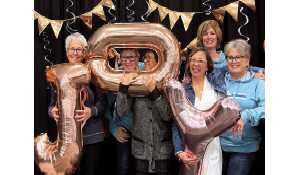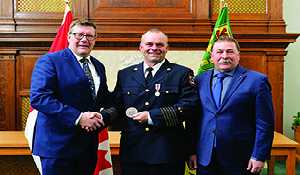Roundabouts on the road and the internet
July 31, 2017, 11:57 am

Without much experience with roundabouts or traffic circles, Saskatchewan drivers will be tested with two new roundabouts on a secondary highway near Regina.
Common for years in Europe, roundabouts have become popular in new suburban neighborhoods where small, single lane versions manage traffic at intersections.
But for highway roundabouts, who knows how well they’ll work with the same drivers who can’t seem to merge from a freeway ramp, turn from lane to lane or do a construction zone zipper merge.
Many people remember Saskatoon’s infamous 8th Street traffic circle which existed throughout the 1970s and often saw driving more akin to a demolition derby.
Many drivers would not yield to the inside or stay in the outside lane if taking the next exit. Some even bravely tried using their signal lights to no avail.
Here’s hoping Saskatchewan joins the rest of the world in successfully using roundabouts.
Last weekend, an otherwise healthy young man was found dead in an east Regina neighbourhood park. When the case was deemed “non-criminal” by the police it didn’t take long for public skepticism.
The 18-year-old had been in the park with friends in the middle of the night and when drunkenly walking home he apparently slipped, which caused the loaded sawed-off shotgun tucked in his pants to accidentally discharge and kill him.
Described by his father as a “good kid” (they always are) the young man apparently ignored his father’s advice to “get rid” of the gun.
Everything related to a sawed-off shotgun is illegal—creating one, owning it, carrying it, storing it, and the list goes on.
The preferred weapon of criminals and gangsters, sawed-off shotguns are most likely to kill someone being threatened by it; an innocent bystander could be shot; or the person using it might shoot himself.
Given those choices, fate and karma intervened. And because the only person who could be charged is dead, no criminal charges can be laid.
But it would be naïve to think that officers from the street crimes unit, specializing in guns and gangs, won’t be examining the weapon, any fingerprints and some family and friends.
The articles, blogs and books began several years ago on disconnecting from smartphones and the associated emails, social media feeds and apps.
Beyond the neuro-science of dopamine production and compulsion loop behavior associated with smartphone use, it’s just better to attune ourselves to other humans and actually talk, connect and empathize.
In addition to house rules in many families—no smartphones at the table and no sleeping with them in the same room—some people take digital sabbaticals or detoxes.
Recently, Josh Spector, writing at medium.com, proposed an approach to breaking bad habits and taking back control of our lives by habituating better smartphone behaviour and sticking to it.
His tips are simple and good: stop checking the phone in the car, during TV commercials or while standing in line. This gives each of us the message that we are in charge of our own attention spans and smartphones need not be the default.
Keep the phone across the room when it’s not in use, disable all notifications and put the phone away after posting something on social media, as not to get drawn into waiting for a reaction or encouraging unnecessary usage.
And Josh suggests there’s nothing wrong with random surfing and getting lost in the net, but set a specific time limit after which the phone is put away.
And one tip I thought very helpful was to set up a buffer zone at the beginning and end of the day so that checking the smartphone is not the first and last thing done each day—take a few minutes to start and end the day without the phone. Tweet




































